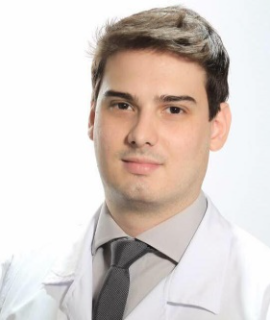Title: Total implant rehabilitations: New techniques and technological advances
Abstract:
Edentulism affects a patient’s life with impairment of psychosocial functioning, nutritional disturbances, and overall loss of quality of life. The conventional approach to implant therapy includes typically a two-step procedure whereby a standardized healing time of between 3 and 6 months is respected to create good conditions for healing. During this time, no implant loading is performed. Good primary implant stability obtained after insertion is the main prerequisite for implant success. Many authors have found that a single-stage implant procedure with immediate loading can also provide good results. In recent years, the developments of computer-aided design/ computer-assisted manufacture (CAD/CAM) technologies have also brought great improvements in the field of oral implant dentistry. These new methods allow clinicians to analyse the patient’s anatomical structure on a computer in relation to a diagnostic prosthesis. With sophisticated software, it is possible to virtually perform implant surgery in an easy and effortless manner before going into the real surgical field. With these technologies, it is also possible to complete rehabilitation of the patient can take place shortly after completion of the surgical procedure. Implant supported fixed full-arch prostheses are at present the treatment alternative which best rehabilitates oral functions in edentulous patients. Classic protocols propose that implants should be unloaded during osseointegration (3 to 4 months in the mandible and 6 to 8 months in the maxilla). Micromovements has been considered, since the start of implant dentistry, one of the main risk factors for osseointegration. Thus, edentulous patients receiving implants are classically given removable dentures during this period, which they often find uncomfortable. Many studies reported case series patients successfully rehabilitated with immediately loaded fixed prostheses. Several advantages have been related to immediate loading, including immediate function and aesthetics, avoidance of temporary removable prostheses, avoidance of second surgeries and preservation of soft tissue anatomy. According to recent studies, implants immediately loaded with fixed full-arch prostheses achieve very high success rates after several years of follow-up, both in post-extraction and healed bone, and both in maxilla and mandible. However, a systematic review on loading protocols concluded that in selected patients immediate loading can be successfully performed, but that tendencies indicate that immediately loaded implants fail more frequently than those loaded conventionally. Furthermore, the immediate loading in edentulous mandibles is well documented, but less evidence is available for the maxilla. Many of these techniques are available in clinical practice and are on the way to becoming routine treatment options. It is of great importance to evaluate the accuracy that defined as the deviations in location or angle between virtual planning of computer?guided surgery and dental implants placements.




